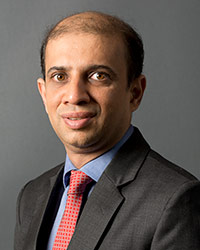The mutual fund industry attracted a lot of new investors over the last few years. As of April 30, the assets under management of the mutual fund industry stood at Rs 23.93 lakh crore. However, in the backdrop of Covid-19 pandemic and its expected impact on the economy, equity markets have turned volatile, making investors nervous. Nimesh Shah, MD and CEO of ICICI Prudential Asset Management Company shares his thoughts on how should investors ride through this volatility, and why asset allocation funds are important in these times.
Q. Mutual Funds gained a lot of traction in the last few years, with assets under management hitting a record. What has worked in their favour?
Mutual fund as an investment product, over years, has emerged as a transparent, well regulated and a low cost investment option which helps in achieving one’s financial goals in a systematic manner. Today, retail investors are aware that inflation beating returns can be generated through equity investing. Further, they understand the benefit of investing via SIPs, thanks to the various initiatives spear headed by market regulator SEBI, and AMFI along with asset management companies, distributors and media. The other aspect which has helped the industry is the increased understanding among the investors about the nature of the product and its long-term orientation. Today, most of the investors no longer redeem their investment just because of market volatility.
Q. Equity markets have been extremely volatile in the last 2-3 months in the wake of the COVID-19 pandemic. How can mutual funds and especially SIPs help investors navigate through this situation?
Market volatility is a part and parcel of equity investing. However, the sharp correction followed by a sharp recovery seen in equities across global markets, over the past two months is unlike anything witnessed by the investors in the recent past. Investors with a long term investment objective and those who are investing through SIP however need not worry. By investing through SIP, an investor gets the opportunity to accumulate more units when markets are lower. Asset allocation discipline should be maintained at all time and do not let market volatility deter your investments.
Q. How would you convince new investors to start investing in such uncertainty and for existing investors who started investing 2-3 years back to hang on and have patience for their money to grow?
We believe the current market condition is a good learning for a new investor, including the ones who have started investing over the past couple of years. Though such instances of sharp market gyrations are often triggered due to global events and is hardly common, one should be aware of the possibility of such black swan events and its potential short term impact on the portfolio.
From an investment perspective, with the recent correction, equity valuations have turned reasonable with good margin of safety for equity investments over long term.
Given the uncertainty regarding the spread of COVID-19 and its possible fallouts, volatility is expected to prevail in the near to medium term. In such situation an asset allocation schemes is best poised to make the most of the opportunities available in equity and debt asset classes.
Q. In uncertain times like we are in, are balanced advantage funds a great opportunity to invest in and why?
The market currently is very volatile given the uncertainty around the developments related to the pandemic. At such a time, it is better to be invested in products which can make the most of volatile times. This is where balanced advantage products come in. Such products help investors take a counter cyclical approach at a time when most investors tend to be pro-cyclical in nature.
Investments made in this type of scheme are managed dynamically and are spread across equity and debt asset classes. The allocation to either of the asset classes is based on their relative attractiveness. For example: In the present times, when the equity valuations have turned attractive, such a fund will increase its equity allocation and when the valuations turns expensive the allocation to debt is increased. Such an arrangement ensured that one gets to buy low and sell high.
In case of ICICI Prudential Balanced Advantage Fund, the equity allocation (30-80 per cent) is model based and hence is devoid of investment behavioural biases which could potentially arise from time-to-time. This underlying model is time tested as it has been in use for over a decade.
Q. Some segments of the market like midcaps and smallcaps had been correcting since the past 12-15 months. Are they attractive now, or should one stick to large cap funds given the big companies will be better prepared to ride out the COVID-19 crisis?
Mid and small caps have witnessed sharp correction over the past year and many of the names are in an oversold zone. This provides a good margin of safety to investors. So, for those who are looking to invest in the broader markets and are ready to stay invested for at least five plus years, they can consider investing into mid and small caps in a staggered manner through SIPs.
Balanced advantage funds best suited to ride out volatile equity markets
Web Desk
Updated: June 01, 2020 15:14 IST

read more
-

Bangladesh unrest: Singer James’s concert cancelled in Faridpur after mob attacks venue
-

Youth Congress to hold ‘Aravalli Satyagraha Yatra’ across states
-

'Madden' glimpse reveals unrecognisable Christian Bale, Nicolas Cage: Who are the actors playing?
-

-

Track Santa this Christmas: What is the ‘Santa Tracker’ and how did it come to be?

